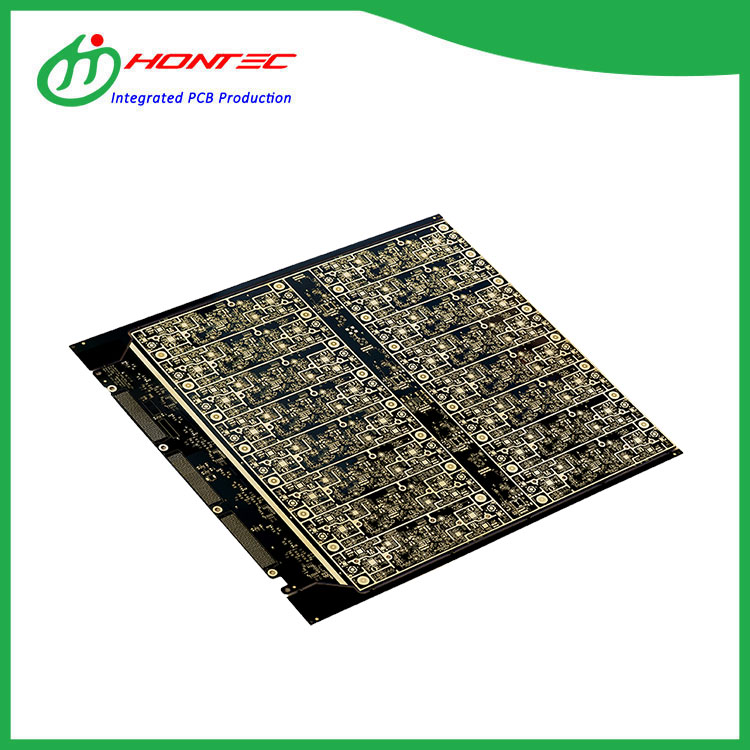Common Materials for High-Frequency PCB Boards
2025-07-08
High-frequency printed circuit boards (PCBs) are essential in modern electronic systems that require fast signal transmission, such as communication equipment, radar systems, satellite devices, and advanced computing technologies. These PCBs must manage electromagnetic interference (EMI), signal integrity, and thermal performance at high frequencies. One of the most critical elements in ensuring their performance is the choice of base materials. This essay explores the common materials used for high-frequency PCBs, emphasizing their properties, benefits, and typical applications.
1. Polytetrafluoroethylene (PTFE)
PTFE, widely recognized under the brand name Teflon, is one of the most prevalent materials for high-frequency PCBs. It offers an extremely low dielectric constant (typically around 2.1) and excellent dielectric loss properties, making it ideal for applications above 1 GHz. PTFE also has outstanding thermal stability and chemical resistance.
However, PTFE is mechanically soft and prone to dimensional changes, making it difficult to process compared to other materials. Therefore, PTFE PCBs often require advanced manufacturing techniques, such as specialized drilling and plating.
Applications: Satellite systems, RF antennas, microwave circuits, and aerospace communication devices.
2. Ceramic-Filled PTFE
To improve the mechanical stability of PTFE, ceramic fillers are added. Ceramic-filled PTFE materials maintain the electrical advantages of pure PTFE while providing enhanced rigidity and dimensional stability. These composites typically have dielectric constants ranging from 2.2 to 10.2, depending on the ceramic content.
Applications: Radar systems, high-frequency filters, and precision RF components.

3. Hydrocarbon-Ceramic Laminates
Hydrocarbon-ceramic laminates, such as Rogers RO4000 series, are engineered to balance performance and manufacturability. They provide stable dielectric properties and lower cost compared to PTFE-based materials. These materials typically have dielectric constants in the range of 3.3 to 3.5 and exhibit low dissipation factors.
Hydrocarbon-ceramic laminates are compatible with standard FR-4 processing techniques, making them suitable for high-volume production.
Applications: Cellular base stations, power amplifiers, and GPS antennas.
4. Low-Loss FR-4 (Modified Epoxy Resins)
Standard FR-4 is not ideal for high-frequency applications due to its higher dielectric loss and variability in dielectric constant. However, enhanced low-loss versions of FR-4 have been developed for mid-range frequency applications. These modified materials have improved dielectric stability and reduced signal loss, supporting frequencies up to several GHz.
Although not as effective as PTFE or hydrocarbon-ceramic laminates for very high frequencies, low-loss FR-4 is a cost-effective option for moderate high-frequency designs.
Applications: Wireless communication modules, RF signal processors, and high-speed digital circuits.
5. LCP (Liquid Crystal Polymer)
LCP is a relatively newer material in high-frequency PCB design. It features a low dielectric constant (~3.0), low dissipation factor, low moisture absorption, and excellent dimensional stability. LCP is particularly advantageous for flexible high-frequency circuits due to its mechanical strength and stability.
Applications: 5G antennas, millimeter-wave devices, and flexible RF circuits.
Conclusion
The choice of materials for high-frequency PCBs is driven by a combination of electrical performance, mechanical stability, process compatibility, and cost considerations. PTFE and its composites offer unmatched electrical properties but come with processing challenges. Hydrocarbon-ceramic laminates provide a balanced option for performance and manufacturability, while low-loss FR-4 serves as a budget-friendly solution for less demanding applications. Emerging materials like LCP are paving the way for innovations in flexible and high-density designs. Understanding these materials and their properties is essential for designing reliable and efficient high-frequency electronic systems.
As a professional manufacturer and supplier, we provide high-quality products. If you are interested in our products or have any questions, please feel free to contact us.